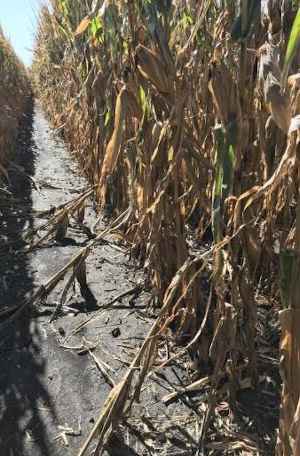By Meaghan Anderson and Alison Robertson
The challenges of this growing season continued this month when a storm front brought more than 3 inches of rain to much of the state. While the rainfall was welcome for pastures and cover crops, it added to the challenges in corn fields, especially those suffering from drought and the derecho. The rainfall, followed by warm temperatures, will further predispose the stressed corn plants to issues like stalk rots and ear rots. This blog will briefly touch on concerns with stalk rots in corn fields this fall, scouting methods for stalk rots, and resources for identifying stalk rots.
Field agronomists across the state noted in our Monday teleconference that the corn appeared to lose significant standability following the continued rainfall last week. As we near harvest, farmers should monitor fields that will be harvested for standability. Checking fields to help prioritize those with significant stalk rot for earlier harvest can reduce harvest losses, reduce the stress of slow harvest, and reduce future issues with volunteer corn.

Checking corn fields for standability issues can reveal potential problems and help prioritize fields for harvest.
A couple methods exist for monitoring fields for stalk rots: the “pinch test” and the “push test.”
“Pinch test”
- Check stalk firmness by pinching the lower internodes near the ground between your thumb and forefinger
- Be concerned when: stalks crush easily
“Push test”
- Push the plant at shoulder height approximately 30 degrees from vertical
- Be concerned when: plants pinch over, plants fail to snap back to vertical
Regardless of method chosen, check a minimum of 100 plants per field, preferably by evaluating at least 20 plants in 5 different areas. If more than 10% of plants in a field crush easily or lodge this indicates stalk rot may be an issue, and that field should be prioritized for harvest. This year may present special challenges in doing these checks due to downed corn, but we would suggest farmers do their best to check several areas of fields. Farmers may need to use multiple field entrances to check different areas whenever possible.
Several stalk rots might be present in crop fields. Use the resources below to learn more about the different types of stalk rots we can see in fields. For more information or in-field assistance, please reach out to your local ISU Extension and Outreach field agronomist.
Source : iastate.edu